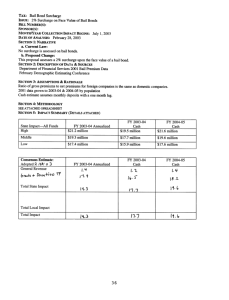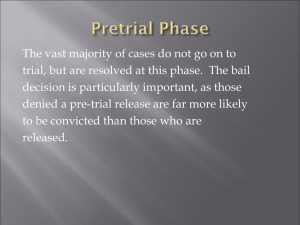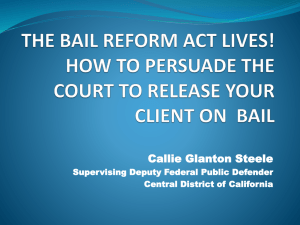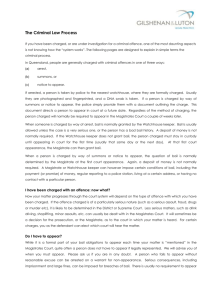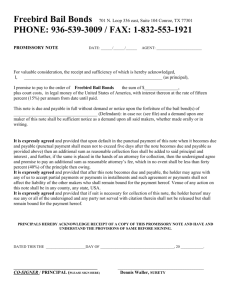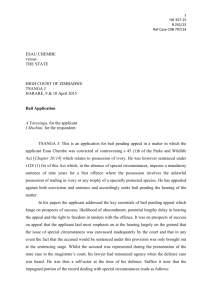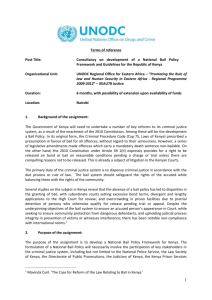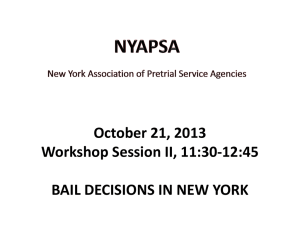A Brief History of Bail
advertisement
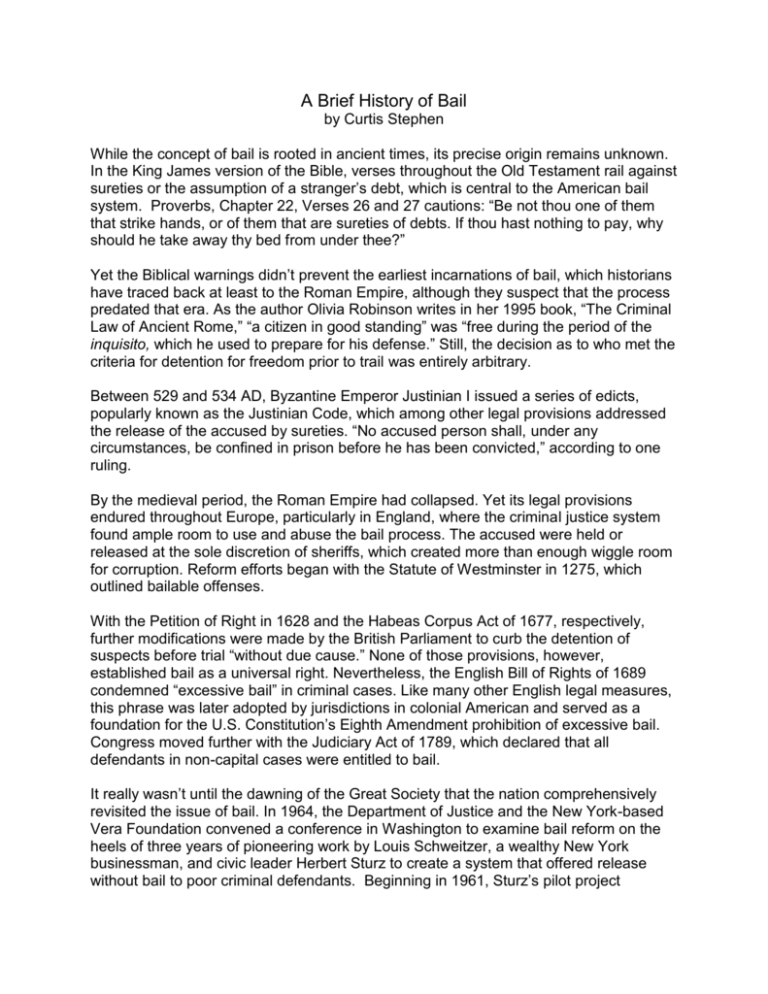
A Brief History of Bail by Curtis Stephen While the concept of bail is rooted in ancient times, its precise origin remains unknown. In the King James version of the Bible, verses throughout the Old Testament rail against sureties or the assumption of a stranger’s debt, which is central to the American bail system. Proverbs, Chapter 22, Verses 26 and 27 cautions: “Be not thou one of them that strike hands, or of them that are sureties of debts. If thou hast nothing to pay, why should he take away thy bed from under thee?” Yet the Biblical warnings didn’t prevent the earliest incarnations of bail, which historians have traced back at least to the Roman Empire, although they suspect that the process predated that era. As the author Olivia Robinson writes in her 1995 book, “The Criminal Law of Ancient Rome,” “a citizen in good standing” was “free during the period of the inquisito, which he used to prepare for his defense.” Still, the decision as to who met the criteria for detention for freedom prior to trail was entirely arbitrary. Between 529 and 534 AD, Byzantine Emperor Justinian I issued a series of edicts, popularly known as the Justinian Code, which among other legal provisions addressed the release of the accused by sureties. “No accused person shall, under any circumstances, be confined in prison before he has been convicted,” according to one ruling. By the medieval period, the Roman Empire had collapsed. Yet its legal provisions endured throughout Europe, particularly in England, where the criminal justice system found ample room to use and abuse the bail process. The accused were held or released at the sole discretion of sheriffs, which created more than enough wiggle room for corruption. Reform efforts began with the Statute of Westminster in 1275, which outlined bailable offenses. With the Petition of Right in 1628 and the Habeas Corpus Act of 1677, respectively, further modifications were made by the British Parliament to curb the detention of suspects before trial “without due cause.” None of those provisions, however, established bail as a universal right. Nevertheless, the English Bill of Rights of 1689 condemned “excessive bail” in criminal cases. Like many other English legal measures, this phrase was later adopted by jurisdictions in colonial American and served as a foundation for the U.S. Constitution’s Eighth Amendment prohibition of excessive bail. Congress moved further with the Judiciary Act of 1789, which declared that all defendants in non-capital cases were entitled to bail. It really wasn’t until the dawning of the Great Society that the nation comprehensively revisited the issue of bail. In 1964, the Department of Justice and the New York-based Vera Foundation convened a conference in Washington to examine bail reform on the heels of three years of pioneering work by Louis Schweitzer, a wealthy New York businessman, and civic leader Herbert Sturz to create a system that offered release without bail to poor criminal defendants. Beginning in 1961, Sturz’s pilot project interviewed defendants and, using a point system, recommended some for pretrial release without bail. The initiative sparked the bail reform movement of the 1960s as similar programs were adopted nationwide, culminating in the Federal Bail Reform Act of 1966. Congress required that defendants in non-capital criminal cases be released on their own recognizance unless judges deemed it unlikely they would return for trial. Yet by the 1980s and 1990s, as narcotics arrests and fear of violent crime soared, greater emphasis was placed on the potential risk that criminal defendants posed to the larger community. In 1984, Congress passed the Crime Control Act, which curbed access to bail. Also that year, the murky world of bail enforcers rose to prominence with the book “Bounty Hunter” by Bob Burton, the famed California-based “bail recovery agent,” and its 1990 sequel “Bail Enforcer.” The latter how-to book includes a host of tips like, “Try to make an arrest without too many witnesses.” Since then, even relatively wealthy criminal defendants have felt the sting of pretrial detention. “I’m stuck in jail / The DA’s tryin’ to burn me / I’d be out on bail if I had a good attorney,” the late rapper Tupac Shakur lamented in his 1994 tune “Out On Bail.” And while some current legislative proposals would reduce access to bail, some experts predict an increased reliance upon pretrial release alternatives in the future. “Jails are overcrowded and it’s proving too expensive to keep people there on lesser offenses,” says Floyd Feeney, professor of law at the University of California at Davis. “It isn’t practical.” From Curtis Stephen, “A Brief History of Bail,” City Limits Investigates, Fall 2007, Vol 31(3), p.9.
